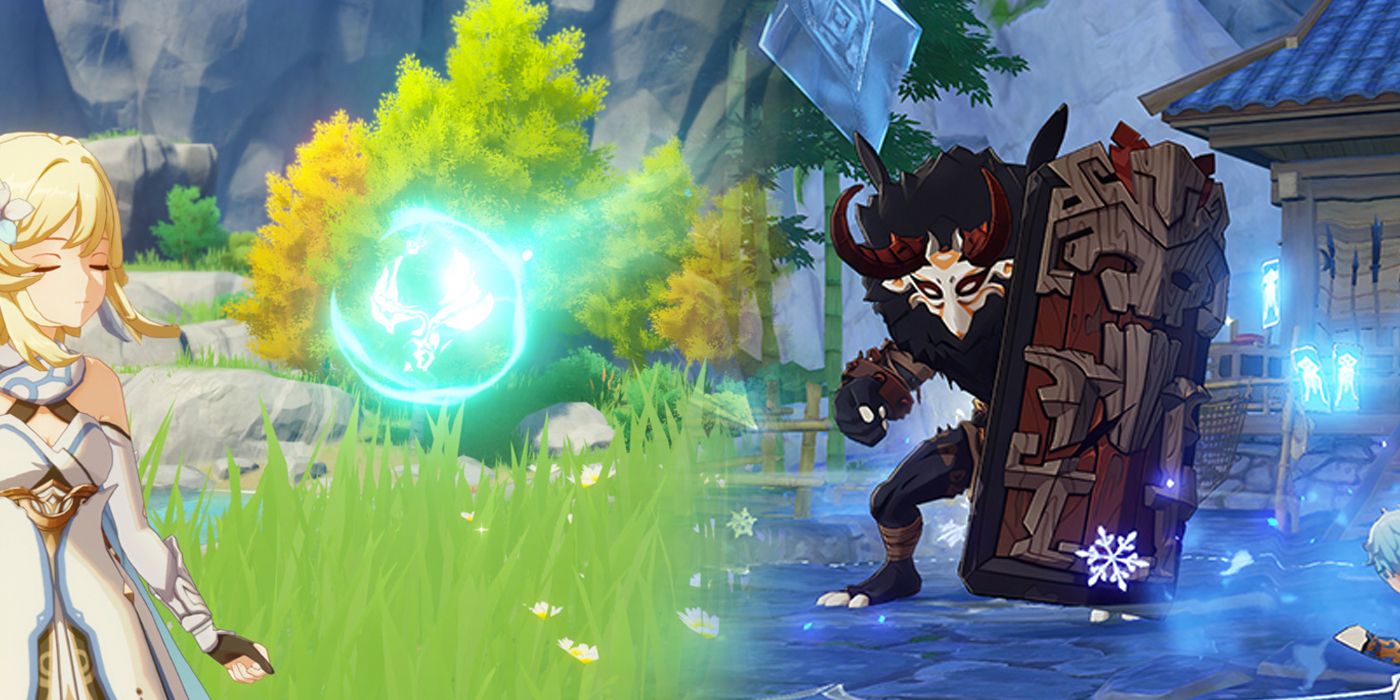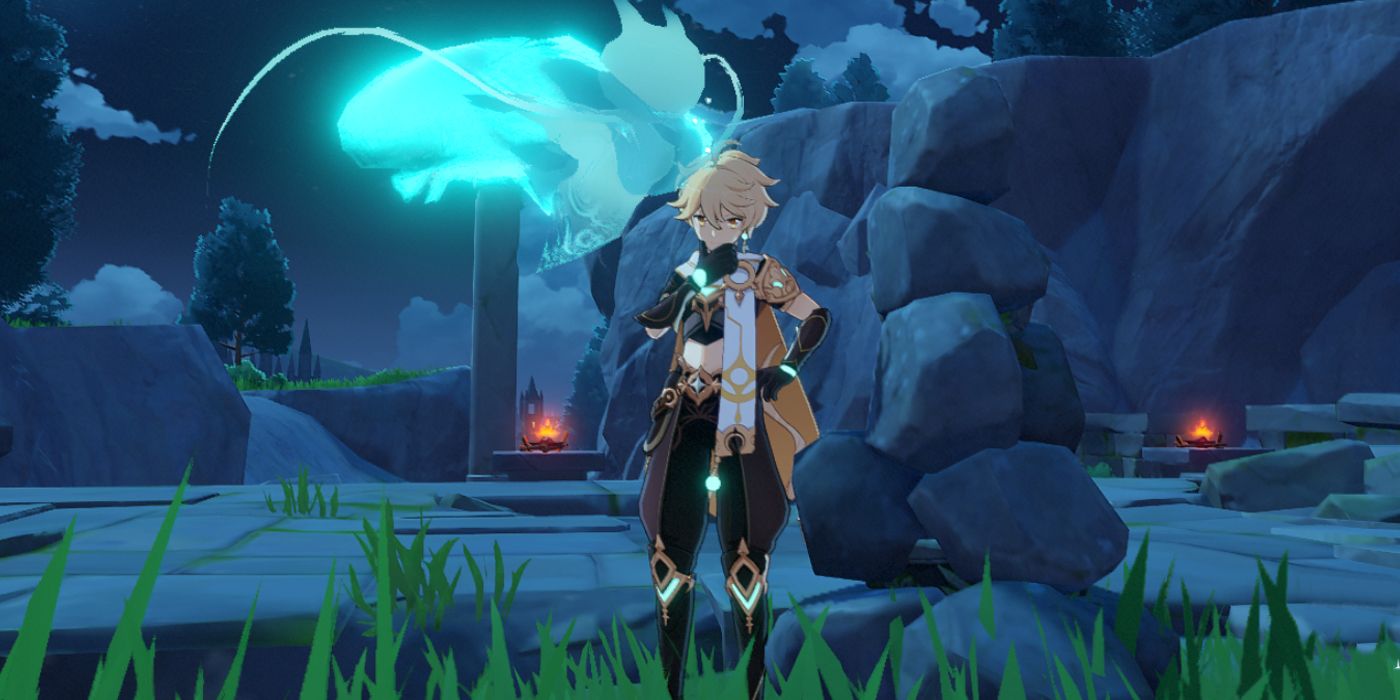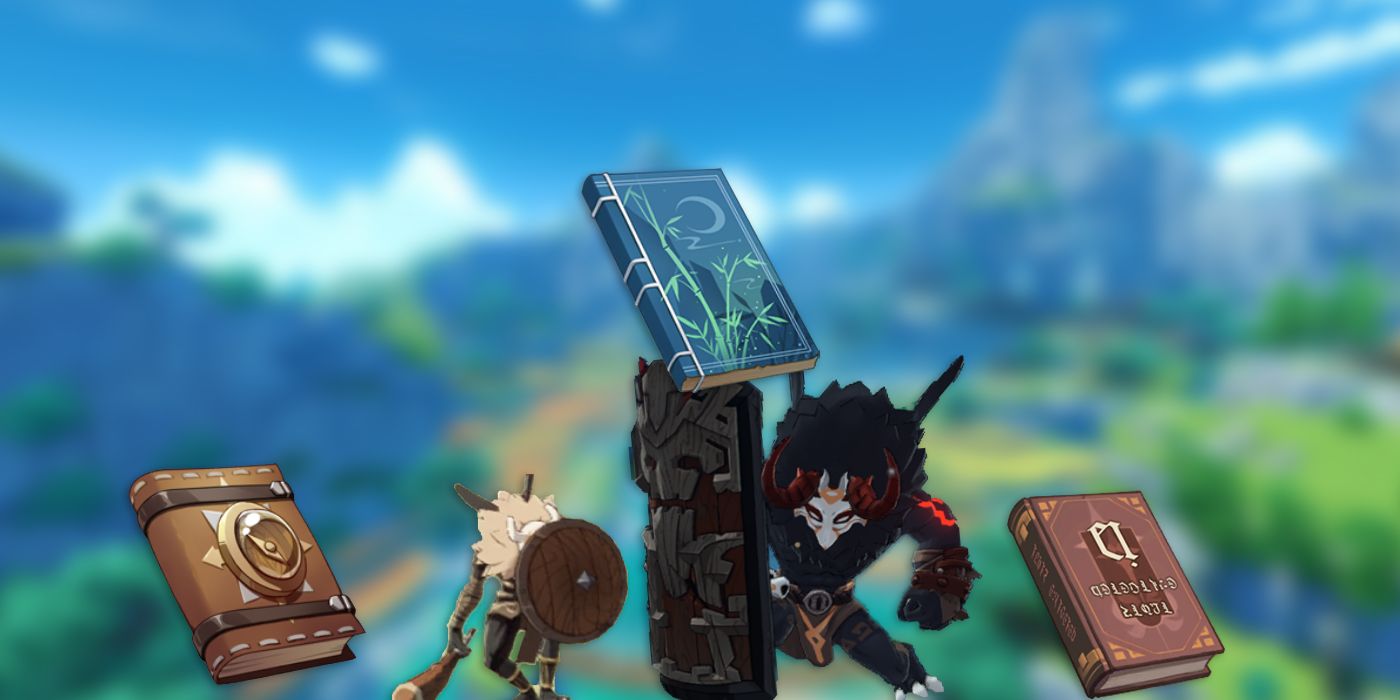Genshin Impact Lore Dive: Seelie and Hilichurls | Game Rant

MiHoYo's Zelda-inspired hit, Genshin Impact, has presented players with an expansive amount of lore to dive into throughout its varied items, characters, and even achievements. Players can take on Story Quests, Archon Quests, World Quests, Commissions, and other forms of adventure, all of which offer up new bits of unique dialogue that shed light on the corners of Teyvat.
Travelers will encounter myriad creatures alongside the treasures they discover, and if they pay close attention, they'll find thoughtful histories to each of those creatures, in some way shape or form. Genshin Impact does an excellent job of imbuing every aspect of its game with narrative elements, even using its in-game Achievements to add dimension to its palette of characters and monsters.
For the purposes of this lore dive, special attention will be given to interesting entities that're most often encountered in Genshin Impact's Teyvat. Countless creatures inhabit the game's map, so a guide could go on for days covering the range of dynamic story characters and world bosses, like Geovishap Hatchlings or disguise-loving Whopperflowers. That said, there are certain creatures that a player sees repeatedly, and which the game seems to give particular attention to.
Interestingly enough, some of these creatures, like the Seelie, remain nameless for many players, despite being seen during nearly every instance of gameplay. Others, like Hilichurls, are easily named by most. Hopefully, this guide can help serve as a jumping point for players looking to dive into Genshin Impact and its readily available narrative elements.

Many players reading this won't even realize they actually do know what a Seelie is until reading this set of sentences. Seelie are the small green floating spirits that are found all throughout Genshin Impact. Whenever a player finds a Seelie, they must help them find their way back to a small sort of beacon/statue, which they normally reside within. Most Travelers not only fail to realize these cute green spirits are named Seelie, but also overlook the fact that their home "statues" are actually supposed to be "gardens."
Characters occasionally mention Seelie by name in spoken voiceover lines, but otherwise, players would only know the spirits' moniker if they happened to inspect some of the game's flavor text. As per one of the game's loading screens, for example, Seelie are a "long extinct race that used to guide humanity." If Travelers keep track of their Achievements too, though, they'll learn the Seelie's "statues" are actually known as Seelie Garden. As per Achievements like "Guiding Wind" and "Lithic Guide," players are actually following Seelie back to their Seelie Gardens when they're helping the small ghosts out.
Many players assume that Seelie are derivative of the common mythological creature known as a a "will o' wisp." The word itself (seelie) was commonly used in Middle English to refer to fairies or fairy-like creatuers. Will o' wisps, or will o' the wisps, are thought to be small glowing ghosts, and are commonly associated with bogs, marshes, and swamps.
In reality, the will o' wisps mentioned in folklore probably refer to "atmospheric ghost lights," which are basically spooky glows and lights that appear under particular natural conditions (such as those present in a bog or marsh, for example.) Seelie aren't helping players find Liben during the Marvelous Merchandise event, but they do insist that players follow them, which tracks with will o' wisp convention. The small spirits often guide, or misguide, lost travelers, which is certainly reminiscent of what Seelie are like when encountered.
Some players note that Seelie resemble tiny versions of the large Elite boss known as an Oceanid. That's definitely true, however, Oceanids have their own elaborate aquatic backstory, so it's safe to assume the two are distinct Genshin Impact entities. Besides, Seelie give players treasure and are closer to green than blue.

Ah, hilichurls. They're the goblins of this game. So naturally, hilichurls have become quite the polarizing enemy, with some players despising the common foe, and other players rallying behind the culturally developed Genshin Impact goblins. Hilichurls are sometimes found guarding hidden Teyvat treasure, but are most often simply napping, and they all seem to wear a mask. The sort of mask, though, varies depending on the kind of hilichurl.
The palette of hilichurls inhabiting Teyvat is incredibly diverse, and includes the following classes of hilichurl, in increasing order of power:
- Hilichurl (Standard, Fighter, Berserker, Grenadier)
- Hilichurl Guard (Wooden Shield, Rock Shield)
- Hilichurl Shooter (Neutral, Cryo, Electro, Pyro)
- Samachurl (Anemo, Dendro, Geo, Hydro)
- Mitachurl (Wooden Shield, Blazing Axe, Rock Shield Wall)
- Lawachurl (Stonehide)
First of all, given the game's frequent updates and seven different Elemental Visions, it goes without saying that these hilichurls may be joined by others in future Genshin Impact updates. That aside, as can be seen, many different varieties of hilichurl can be found in Teyvat. Standard ones will attack players with their claws or a club (standard hilichurl, fighter hilichurl), while others like the tiny Samachurl wield staffs and call upon the Elements.
Hilichurl are also unique enemies in that they employ the Dendro Vision, which is yet to be featured by any of the playable characters in Genshin Impact. Dendro is essentially the game's version of plant magic, so it'll be interesting to see how future characters take advantage of this attribute.
Insofar as history, that of the hilichurl is unbelievably rich. miHoYo has infused so much of Teyvat with hilichurl lore that it's difficult to progress through the story without developing some sort of sympathy for them. One particular Genshin Impact quest introduces hilichurls via cultural diplomacy, but for the most part, players will find information on the lovable goblin-adjacent monsters in the game's various "books."
Much like in Elder Scrolls and Breath of the Wild, players will find literal tomes throughout all of Teyvat. They're given as quest rewards (and actually register as "Quest Items" in the inventory), but can also be found hidden across the Teyvat map, and in the game's actual libraries. These items, as one might ironically neglect to realize, are actually used for reading. Even though they're found in-game, and given as rewards, players generally don't use them for combat, or crafting, or anything the like. Instead, these books inform the curious player about the game's rich history.
In the case of hilichurls, the literature is vast. It seems that hilichurl not only communicate in their own form of spoken language, but also express themselves in written and sung form; they are also highly religious. The creatures live in tribes, and their settlements can be observed to have buildings devoted to rituals, as well as simple boar-raising, so they definitely have some sort of cultural and societal infrastructure. One particular Dadaupa Gorge tribe is thought to worship the game's fallen Eclipse Dynasty, known as Khaenri'ah.
As per in-game books like the Hilichurl Ballad Collection, Teyvat ecologists argue that hilichurls may be capable of philosophical thought and debate, especially when one considers their penchant for poetry and song.
Hilichurls worship the Genshin Impact Elemental Visions, and though some of their songs or poems are recited during sacrifices or battle, others are simply celebratory, or commemorative. To close, below are the last three verses of a hilichurl song- in praise of the Anemo Archon - commonly heard when the creatures become inebriated:
"Unu, unu
Kuzi mita dada ye
Mita dada-a-mimi"
This is one of genuinely dozens of hilichurl poems and song-bits miHoYo's developers have stored away in the corners of Teyvat, so players are highly encourage to take a look and find a poem that speaks to them.
Genshin Impact is available now on the App Store, Google Play, PC, and PS4, and is currently in development for Switch.

Post a Comment